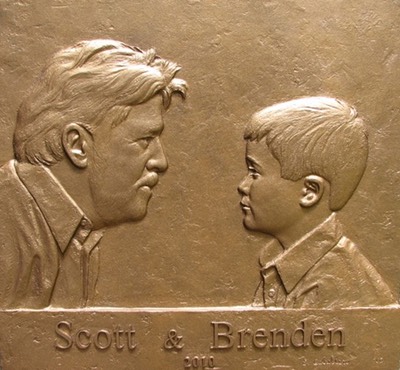In conversation we act out in one of two ways.
We either REACT or RESPOND.
We all have a number of specific conversations that we dread. It may be with a spouse, child, family member, neighbor, boss, peer or employee.
We know the conversation is in trouble because of the tone of voice, gestures and words used. We have been down this road before. The results are always predictable & uncomfortable. We have reached a conversation threshold that does not get resolved with continued interaction, regardless of our intentions.
In the following exercise we will identify conversations that start out well, but in a short time predictably deteriorates from bad to worse. Their defining mark is that they leave us with a distinct residue.
Residue is that feeling in our bodies that is like a pressure, an ache or heaviness. It stays with us long after the conversation has ended & acts as a reminder that things did not go as intended.
Residue drains our energy reserves. We, in effect, carry the other person on our backs to the next encounter, again repeating the same unproductive conversation.
Residue most often occurs when we interact with specific people, who behave in a specific way, around a particular topic or concern.
Effects of Residue:
Residue causes us to go unconscious vs. options that keep the conversation open.
Residue repeatedly triggers the same unproductive behavior, which results in the same unproductive outcome, when we engage in future interactions with the same person.
Residue repeatedly triggers the same unproductive behavior, which results in the same unproductive outcome in future interactions with any other person who displays the same behavior as the first person.
Over time, residue causes us to avoid particular people, situations, topics, goals, and life dreams.
The effect of reactive residue, from a hardwired perspective of why we created it in the first place, is that hardwiring protects us from survival feelings. Feelings that we will spiral down into awkward or fearful places. Feelings we cannot control when around significant others.
The dysfunctional effect of reactive residue is that we miss opportunities to experience deep, fulfilling and supportive relationships with an extensive group of people. We miss the opportunity of having an abundance of people in our lives who have the skills to see, understand, accept, choose and value us just as we are.
Reactive residue contributes to:
- Forty to ninety percent lowered productivity in the work place.
- A divide & conquer, win at all cost mentality.
- Low moral and self-esteem.
- The loss of feeling like a valuable contributor to the family, partnership, group, or company.
- Feeling pushed into a reactive stance, causing us to either fight back or flee to safety. Both of these stances block the opportunity to truly feel what is really going on in a relationship.
- Causing us to feel temporarily unsafe, vulnerable, a risk and anxious at times.
People and organizations are not only their reactive behavior, however they are responsible for that behavior.
We are in a REACTIVE mode (hardwiring) when focused primarily on another person’s behavior. The proof is in a feeling of RESIDUE that comes up during & after we have had a conversation that did not go well. In the end, we were able to get the other persons ATTENTION, but not the RESULTS we desired.
- Reactive behavior is a reaction to the hardwired behavior of other people who are trying to get your attention.
- Reactive behavior often results in defensiveness, misunderstandings and repression of true feelings. In truth, the person we are currently reacting to is not the source of our reaction.
- Reactive behavior often pushes others away intellectually, emotionally and physically.
- Reactive behavior leaves behind residue and makes future conversations uncomfortable.
- Reactive behavior is present when you hear:
- Polar Language - such as: right/wrong, good/bad or black/white statements or
- Ultimate Statements - such as: always/never, everybody/nobody, and fact/truth statements.
We are in a RESPONSIVE mode when we are focused on the other person’s Core Intentions and their behavior. We see evidence of the RESPONSIVE mode when the RESULTS we set out to achieve, without iterative conversations, is achieved. By using Core Intentional language, all participants leave with a sense of what to do next to be successful and with a personal feeling of value.
We call listening in a responsive way Deep Listening. Deep listening monitors behavior while speaking to the core intentions of the other person or group. In order to get and give a feeling of value in conversation, we must include the asking of questions. Questions about what the other person is talking about, not what we are thinking or our verbal opinion about their ideas. The best leaders influence through great questions.
Copyright © 2020 Scott Taylor Consulting All Rights Reserved.
